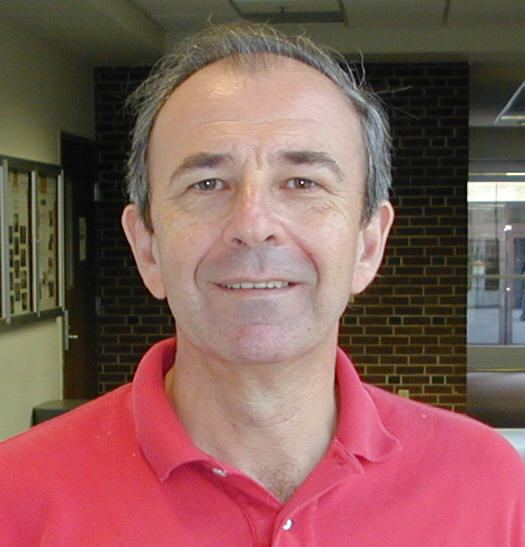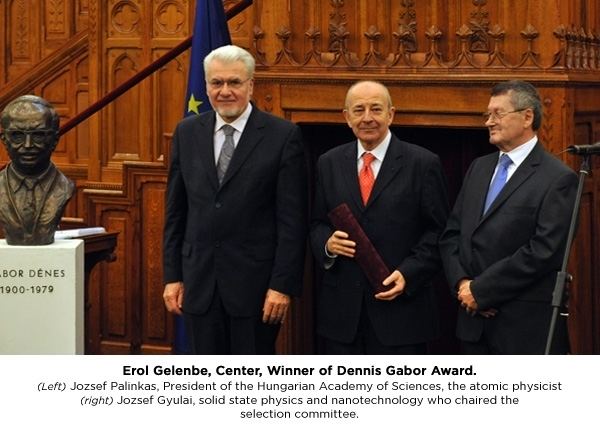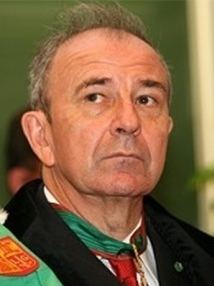Nationality FrenchTurkish Name Erol Gelenbe | Role Computer scientist | |
 | ||
Institutions University of LiegeParis-Sud 11 UniversityNew Jersey Institute of TechnologyDuke UniversityUniversity of Central FloridaImperial College Alma mater Middle East Technical UniversityPolytechnic Institute of New York University Doctoral advisor Edward J. SmithJacques-Louis Lions Known for G-networksRandom neural network Influences Jacques-Louis LionsMichael O. RabinPeter Whittle Education Middle East Technical University, Polytechnic Institute of New York University, TED Ankara Koleji Books Analysis and Synthesis, Introduction to Queueing, Multiprocessor Performance, Concurrency Control in Distribute, Visions of Computer Science Similar People Francois Baccelli, Samson Abramsky, Guy Pujolle, Jacques‑Louis Lions, Peter Whittle | ||
G bor d nes d j 2013 erol gelenbe
Sami Erol Gelenbe (born 22 August 1945) is a Turkish-French computer scientist, electronic engineer and applied mathematician who is professor in Computer-Communications at Imperial College. Known for pioneering the field of modelling and performance evaluation of computer systems and networks throughout Europe, he invented the random neural network and the eponymous G-networks. His many awards include the ACM SIGMETRICS Life-Time Achievement Award, and the in Memoriam Dennis Gabor Award of the Hungarian Academy of Sciences.
Contents
- G bor d nes d j 2013 erol gelenbe
- Prof erol gelenbe guest lecture electrical engineering
- Biography
- Notable contributions
- Latest research interests
- Honours
- Fellowships
- Awards
- References

Prof erol gelenbe guest lecture electrical engineering
Biography

Working as a foreigner everywhere, Gelenbe was born in Istanbul in 1945, to Yusuf Ali Gelenbe, a descendant of the 18th-century Ottoman mathematician Gelenbevi Ismail Efendi, and to Maria Sacchet Gelenbe from Cesiomaggiore, Belluno, Italy. After a childhood spent in Istanbul and Alexandria (Egypt), He graduated from Ankara Koleji in 1962 and the Middle East Technical University in 1966, winning the K.K. Clarke Research Award for work on "partial flux switching magnetic memory systems". Awarded a Fulbright Fellowship, he continued his studies at Polytechnic University, where he completed a master's degree and a PhD thesis on "Stochastic automata with structural restrictions", under the supervision of Edward J. Smith.

After graduation he joined the University of Michigan as an assistant professor. In 1972, and then on leave from Michigan, he founded the Modeling and Performance Evaluation of Computer Systems research group at INRIA (France), and was a visiting lecturer at the University of Paris 13 University. In 1971 he was elected to the second chair in Computer Science at the University of Liège, where he joined Professor Danny Ribbens in 1973, while remaining a research director at INRIA. In 1973, he was awarded a Doctorat d'État ès Sciences Mathématiques from the Paris VI University with a thesis on "Modèlisation des systèmes informatiques", under Jacques-Louis Lions. He remained a close friend of Professor Ribbens and of the University of Liège, and in 1979, he moved to the Paris-Sud 11 University, where he co-founded the Laboratoire de Recherche en Informatique and its PhD Program, before joining Paris Descartes University in 1986 to found the Ecole des Hautes Etudes en Informatique.

Gelenbe was appointed New Jersey State Endowed Chair Professor at the New Jersey Institute of Technology from 1991 to 1993, and then in 1993 he was appointed to Duke University where he was the Nello L. Teer Chair Professor and Head of the Electrical and Computer Engineering Department until 1998 when he moved to the University of Central Florida, and founded the School of Electrical Engineering and Computer Science and created the Harris Corporation Engineering Centre
In 2003, Gelenbe was offered a Chair at Imperial College London as the Dennis Gabor Professor in Computer and Communication Networks and Head of Intelligent Systems and Networks.
Notable contributions
Gelenbe has contributed pioneering research concerning the performance of multiprogramming computer systems, virtual memory management, data base reliability optimisation, distributed systems and network protocols. He formed, led, and trained the team that designed the commercial QNAP Computer and Network Performance Modeling Tool. He introduced the Flexsim Object Oriented approach for the simulation in manufacturing systems. He carried out some of the first work on adaptive control of computer systems, and published seminal papers on the performance optimisation of computer network protocols and on the use of diffusion approximations for network performance. He developed new product form queueing networks with negative customers and triggers known as G-networks. He also introduced a new spiked stochastic neural network model known as the random neural network, developed its mathematical solution and learning algorithms, and applied it to both engineering and biological problems. His inventions include the design of the first random access fibre-optics local area network, a patented admission control technique for ATM networks, a neural network based anomaly detector for brain magnetic resonance scans, and the cognitive packet network routing protocol to offer quality of service to users.
From 1984 to 1986 he served as the Science and Technology Advisor to the French Secretary of State for Universities. He founded the ISCIS (International Symposium on Computer and Information Sciences) series of conferences that since 1986 are held annually in Turkey, the USA and Europe to bring together Turkish computer scientists with their international counterparts. According to the Mathematics Genealogy project, Gelenbe has graduated over 72 PhD students, placing him in the Top50 worldwide – all time – PhD supervisors in the mathematical sciences.
Latest research interests
Gelenbe currently works on energy efficient computer systems and self-aware networks, and on network security and on networked auctions. His recent collaborations with biologists include Gene Regulatory Networks and Protein Sequence Alignment.
